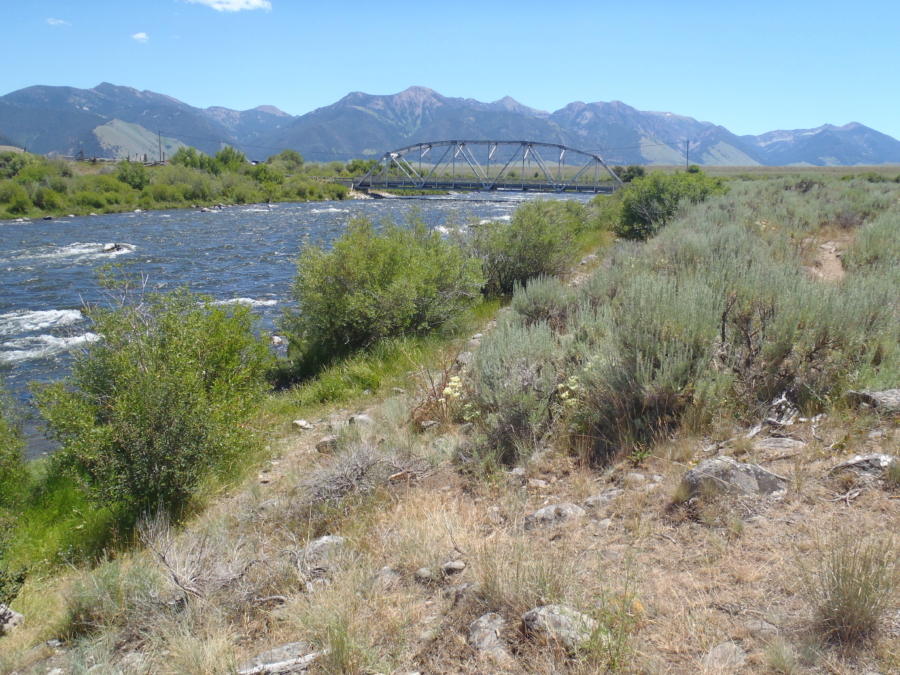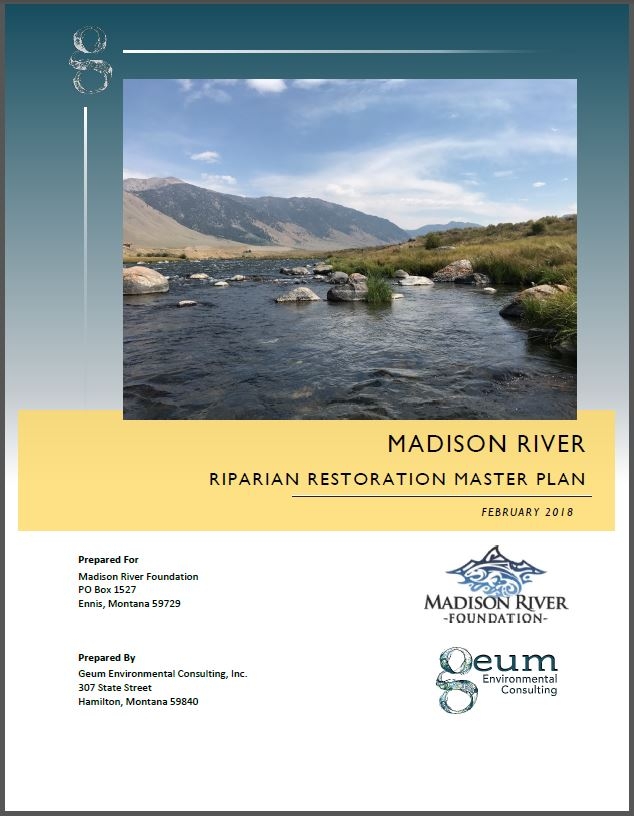
Project Summary
To help support its mission of protecting the unique Madison River and its high quality fishery, the Madison River Foundation contracted with Geum to develop a Riparian Restoration Master Plan to guide restoration opportunities along the river corridor. This document serves to guide management and restoration planning decisions with the vision of restoring and enhancing the river’s riparian, wetland, and aquatic habitats to promote ecological resilience for generations to come. The project area encompasses a 27.5 mile reach that extends from the US 87 bridge just downstream from Earthquake Lake to the Varney Bridge about eight miles upstream from Ennis.
Within the project reach Geum evaluated existing riparian vegetation communities and river geomorphology to understand limiting factors that can be addressed through restoration or management actions. Limiting factors within the project area include reduced floodplain connectivity, altered flow regime, livestock and wildlife impacts, recreation impacts, infrastructure and environmental conditions. A set of restoration strategies was developed to address the limiting factors and promote riparian ecosystem function. These strategies will be used to implement a series of restoration projects along the river corridor in the coming years.
The goals of the Riparian Restoration Master Plan are:
- Increase riparian tree and shrub cover in areas where historical land management practices have reduced or eliminated riparian forests and shrublands
- Provide more shade and cover for fish
- Create a corridor along the river where the primary land management objective is supporting and maximizing natural river and floodplain ecosystem function
- Restore a more normative hydrograph and natural sediment transport processes where feasible
- Reconnect tributaries hydrologically by developing agreements to support instream flows during critical periods
- Increase aquatic habitat complexity in areas of high ecological productivity such as tributary deltas
- In general, increase biodiversity and habitat complexity to support long-term ecosystem resilience in the face of climate change and related phenomena such as droughts, high water temperatures, and other unforeseen threats

